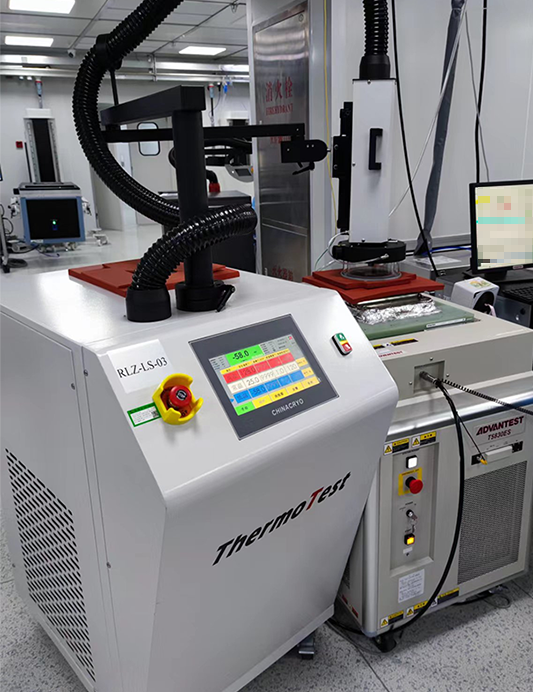Failure analysis has been popularized from military industry to ordinary enterprises in recent years. It is generally based on the failure mode and phenomenon, through analysis and verification, to simulate and reproduce the failure phenomenon, find out the cause of failure, and dig out the failure mechanism. It has strong practical significance in improving product quality, technology development, improvement, product repair and arbitration of failure accidents. The methods are divided into destructive analysis, non-destructive analysis, physical analysis, chemical analysis, etc. The high and low temperature impact equipment TS-560, TS-580, TS-760, etc. of Chengdu Zhongliang Cryogenic Technology Co., Ltd. can perform chip failure analysis, and provide reliability tests such as characteristic analysis, high and low temperature temperature change test, temperature impact test, etc.

Then why should I conduct IC failure analysis?
1. Failure analysis is a necessary means to determine the chip failure mechanism.
2. Failure analysis provides necessary information for effective fault diagnosis.
3. Failure analysis provides necessary feedback information for design engineers to continuously improve or repair the design of the chip to make it more consistent with the design specification.
4. Failure analysis can evaluate the effectiveness of different test vectors, provide necessary supplements for production testing, and provide necessary information basis for verification testing process optimization.
What is the failure principle?
Failure mechanism is a physical or chemical process that causes failure of parts, components and materials. The inducing factors of this process are internal and external. When studying the failure mechanism, we usually start with the external inducing factors and failure manifestations, and then study the hidden internal factors. When studying the law of batch failure, mathematical statistics methods are often used to form a permutation chart or Pareto chart showing the relationship between failure mechanism, failure mode or failure location and failure frequency, failure percentage or failure economic loss, so as to find out the main failure mechanism, orientation and location that must be solved first. The composition of any product or system is hierarchical, and the failure causes are also hierarchical, such as system - single machine - component (assembly) - part (element) - material. The failure reason of the upper level is the failure phenomenon of the lower level. The lower the level of failure, the more essential the cause of failure.
Main steps and contents of failure analysis
① IC unsealing: remove the IC sealant, keep the chip function intact, and keep die, bond pads, bond wires and even lead frame free from damage, so as to prepare for the next chip failure analysis experiment.
② SEM/EDX composition analysis: including material structure analysis/defect observation, routine micro area analysis of element composition, accurate measurement of component size, etc.
③ Probe test: use the micro probe to quickly and conveniently obtain the internal electrical signal of IC. Laser cutting: use micro laser beam to cut off lines or specific areas on the upper layer of the chip.
④ EMMI detection: EMMI low light level microscope is a highly efficient failure analysis tool, providing a highly sensitive and non-destructive fault location method, which can detect and locate very weak luminescence (visible light and near-infrared light), thereby capturing the visible light of leakage current generated by various component defects or anomalies.
⑤ OBIRCH application (laser beam induced impedance value change test): OBIRCH is commonly used for the analysis of high impedance and low impedance inside the chip, and the analysis of circuit leakage path. The OBIRCH method can effectively locate defects in circuits, such as holes in lines and holes under through holes. The high resistance area at the bottom of the through-hole can also effectively detect short circuit or leakage, which is a powerful supplement to the luminous microscopy technology.
⑥ LG liquid crystal hot spot detection: using liquid crystal to sense the molecular arrangement and recombination at the IC leakage point, it presents a speckle image different from other areas under the microscope to find the leakage area (fault point exceeding 10mA) that puzzles designers in the actual analysis.
⑦ Fixed point/non fixed point chip grinding: remove the gold bumps planted on the LCD drive chip pad to keep the pad intact for subsequent analysis or rebonding.
⑧ X-Ray non-destructive detection: detect various defects in IC packaging, such as layer peeling, bursting, holes and integrity of wiring, possible defects in PCB manufacturing process, such as poor alignment or bridging, open circuit, short circuit or abnormal connection defects, and integrity of solder balls in packaging.
⑨ SAM (SAT) ultrasonic flaw detection can perform non-destructive testing on the internal structure of IC packages, effectively detecting various damages caused by water vapor or heat.


















